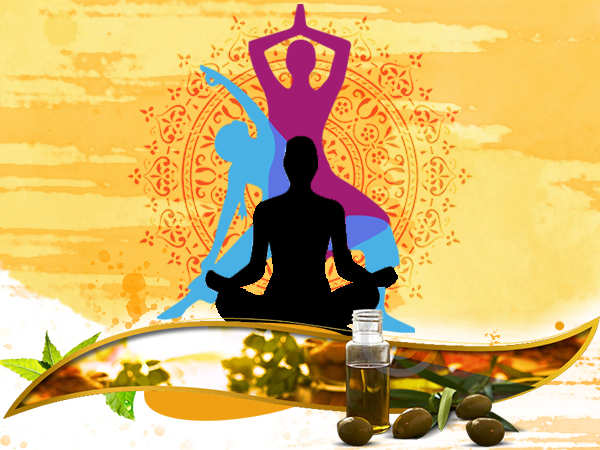Ayurveda, literally meaning “the science of life” (Ayur = life, Veda = science or knowledge), is one of the world’s oldest holistic healing systems. Originating in India over 5,000 years ago, it’s based on the belief that health and wellness depend on a delicate balance between the mind, body, and spirit.
Core Principles of Ayurveda:
At its heart, Ayurveda is deeply rooted in the concept that the entire universe, including human beings, is composed of five basic elements, known as Panchamahabhutas:
-
Akasha (Space/Ether): Represents emptiness, vastness.
-
Vayu (Air): Represents movement, lightness.
-
Agni (Fire): Represents transformation, metabolism, heat.
-
Jala (Water): Represents cohesion, fluidity, coolness.
-
Prithvi (Earth): Represents stability, structure, heaviness.
These five elements combine in the human body to form three fundamental life energies or biological humors called Doshas:
-
Vata (Space + Air): Governs all movement in the body, including breathing, circulation, nerve impulses, and waste elimination. It’s associated with qualities like dry, light, cold, rough, subtle, and mobile. When out of balance, Vata can lead to anxiety, insomnia, constipation, dryness, and pain.
-
Pitta (Fire + Water): Responsible for metabolism, digestion, intelligence, and transformation. It’s associated with qualities like hot, sharp, light, slightly oily, liquid, and spreading. Imbalances can manifest as inflammation, acidity, anger, skin rashes, and fever.
-
Kapha (Water + Earth): Provides structure, lubrication, stability, and immunity. It’s associated with qualities like oily, heavy, cold, dull, slimy, and soft. An aggravated Kapha can lead to sluggish digestion, weight gain, congestion, lethargy, and emotional attachment.
Prakriti (Individual Constitution): A central Ayurvedic concept is Prakriti, which refers to each individual’s unique psycho-physiological constitution determined at conception by the predominant doshas. Understanding one’s Prakriti is crucial in Ayurveda, as treatment plans, dietary recommendations, and lifestyle choices are tailored to maintain this inherent balance.
Agni (Digestive Fire): Ayurveda places immense importance on Agni, the digestive fire. A strong and balanced Agni is considered key to good health, as it ensures proper digestion, assimilation of nutrients, and efficient elimination of waste, preventing the accumulation of toxins (Ama).
Dhatus (Tissues) and Malas (Waste Products): Ayurveda also describes seven primary bodily tissues (Rasa, Rakta, Mamsa, Meda, Asthi, Majja, Shukra – Plasma, Blood, Muscle, Fat, Bone, Bone Marrow, Reproductive Fluid) and three main waste products (Pureesha/stool, Mutra/urine, Sweda/sweat). Health is viewed as the optimal functioning and balance of doshas, dhatus, and proper elimination of malas.
Common Ayurvedic Treatments and Practices:
Ayurveda emphasizes prevention and promoting good health through a holistic approach. Treatments are highly individualized and may include:
-
Dietary Adjustments: Tailored food recommendations based on one’s dosha, season, and health condition. Emphasis on fresh, seasonal, whole foods and mindful eating practices.
-
Herbal Medicine (Dravyaguna): Use of a vast array of herbs, spices, and natural compounds in various forms (powders, decoctions, oils, tablets) to balance doshas and treat specific ailments.
-
Lifestyle Recommendations (Dinacharya & Ritucharya): Daily routines (Dinacharya) like waking early, oil pulling, self-massage, and seasonal routines (Ritucharya) to align with natural rhythms.
-
Panchakarma: A set of five therapeutic procedures designed for deep detoxification and rejuvenation. These include:
-
Vamana (Therapeutic Emesis): Induced vomiting to eliminate excess Kapha.
-
Virechana (Purgation): Therapeutic purgation to remove excess Pitta.
-
Basti (Enema): Herbal enemas to cleanse the colon and balance Vata.
-
Nasya (Nasal Administration): Administration of herbal oils or powders through the nasal passages for head and neck purification.
-
Raktamokshana (Bloodletting): (Less common today) Removal of small amounts of blood to purify.
-
-
Abhyanga (Oil Massage): Therapeutic massage using warm herbal oils to nourish tissues, improve circulation, and calm the nervous system.
-
Shirodhara: A continuous stream of warm oil poured onto the forehead, highly beneficial for calming the mind, reducing stress, and improving sleep.
-
Yoga and Meditation: Integral practices for physical flexibility, mental clarity, and spiritual well-being, helping to balance the mind-body connection.
-
Pranayama (Breathing Exercises): Techniques to regulate breath and vital energy (Prana) for improved health.
Benefits of Ayurveda:
Advocates of Ayurveda claim numerous benefits, including:
-
Holistic Wellness: Addresses physical, mental, and spiritual aspects of health.
-
Disease Prevention: Focuses on maintaining balance to prevent illness before it occurs.
-
Personalized Treatment: Plans are customized for each individual’s unique constitution.
-
Reduced Stress and Improved Mental Health: Practices like yoga, meditation, and shirodhara are effective for stress management, anxiety, and improving sleep.
-
Improved Digestion and Detoxification: Emphasizes healthy eating and cleansing therapies to optimize gut health.
-
Boosted Immunity: Aims to strengthen the body’s natural defense mechanisms.
-
Chronic Disease Management: Offers complementary approaches for conditions like arthritis, diabetes, and skin issues.
-
Natural Approach: Primarily uses natural ingredients and lifestyle modifications.
Considerations:
While Ayurveda offers a rich tradition of healing, it’s important to approach it with a balanced perspective:
-
Scientific Evidence: While many Ayurvedic practices are gaining scientific validation, more rigorous clinical research is needed for some treatments and formulations.
-
Regulation: The quality and safety of Ayurvedic products can vary, and some traditional formulations may contain heavy metals if not prepared correctly. It’s crucial to consult with qualified and licensed Ayurvedic practitioners.
-
Integration: Many people find success by integrating Ayurvedic practices with conventional medicine, especially for acute or severe conditions.
In India, Ayurveda is a recognized system of medicine, with dedicated colleges, hospitals, and practitioners. In Ghaziabad, Uttar Pradesh, you can find various Ayurvedic clinics, doctors (BAMS qualified), and medicine retailers, including well-known brands like Patanjali.


